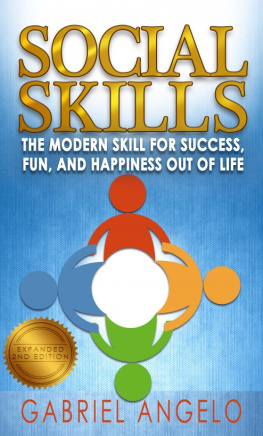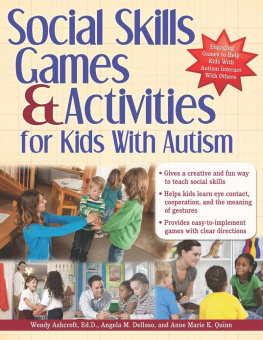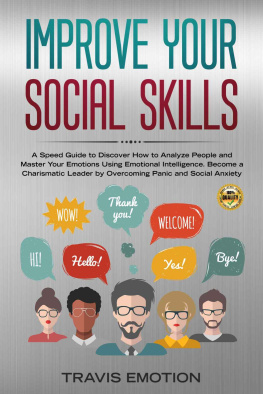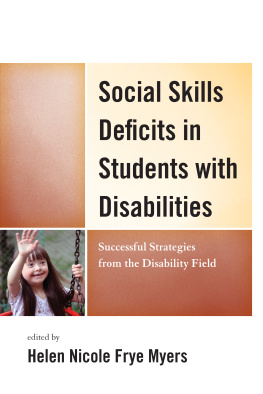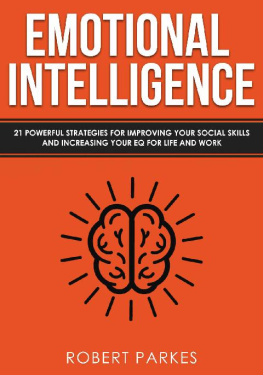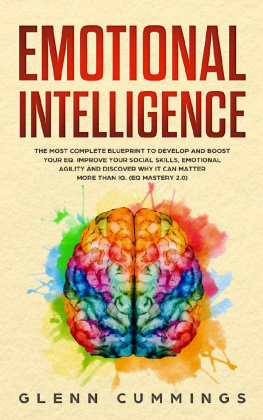SOCIAL SKILLS
2nd Edition
Gabriel Angelo
Copyright 2015 SN & NSPublications
SmashwordsEdition
It is impermissible to reproduce any part ofthis book without prior consent. All violations will be prosecutedto the fullest extent of the law. While attempts have been made toverify the information contained within this publication, neitherthe author nor the publisher assumes any responsibility for errors,omissions, interpretation or usage of the subject matter herein.This publication contains the opinions and ideas of its author andis intended for informational purpose only. The author andpublisher shall in no even held liable for any loss or otherdamages incurred from the usage of this publication.
CONTENTS
Chapter 1
Chapter 2
Chapter 3
Chapter 4
Chapter 5
Chapter 6
Chapter 7
Chapter 8
Chapter 9
Chapter 10
Chapter 11
Chapter 12
Chapter 13
Chapter 14
Chapter 15
-
-
-
-
-
CONCLUSION
INTRODUCTION
You are reading this bookfor a reason, either you're lacking a natural ease when comes tobeing around other people, you're looking to help others improvetheir interaction with one another, or perhaps the intricatedynamic of human relationship piques your interest.
Whatever the case, this bookshould, first and foremost, be viewed as a reference. It iscombination of resource and manual; hence, you may not want toapproach this book like a conventional book.
To begin with, you canstart reading from the beginning straight to the end; however, ifyou're not into the theories and scientific background, you canproceed to the latter part of the book for more of the guideelements, typically .
The first-half is more about the studyingand understanding. Some of these you may already know, but wouldrather be ignorant to say all do, so it's intended to be abrush-up, or you're interested in case-studies and thetechnicalities of them all.
The second-half is all about theapplications, training, and exercises, which would suit some of youbetter. For instance, you can train yourself with self-sessions, oruse it to help others, i.e. , children, teens, oradults.
The ultimate goal of thisbook is simple: make it as complete in depth as possible for thefirst time ever around this area of study that is none other than" social skills ."
PART I
SOCIAL SKILLSFUNDAMENTAL
Chapter 1
THE NEED TO BESOCIAL
Simply put, humans aresocial creatures. Most human activity takes place in groups:living, education, worship, playing, even eating. Numerous studieshave shown that human health and life span are often dependent onthe degree to which a person is sociable. Happy people who interactfrequently with others have less disease and live longer than thosewho socialize less and spend more time alone. ( ) In essence, thegreatest guarantee of a long and healthy life may be theconnections we have with other people.
Early in the history ofman, survival depended on the protection of tribes and families.Isolation often meant death; socialization was one of thefundamental keys to survival. Today, being part of a group orcommunity gives us a sense of identity and belonging. It helpsvalidate who we are and is a source of direct help in times oftrouble. In short, our connections to other people areindispensable to who we are and how we feel about ourselves.( )
The social world we live intoday is highly evolved. Being social means living in companionshipwith others in a community. Today, technology has developed to thepoint where we carry personal accessories like smart phones thatkeep us in touch with each other constantly through talk, textingand photos. The internet and sites like Facebook allow people torelay news about everything from major milestones in life, such asbirths, deaths, and engagements, to something as simple as the moodsomeone is in or what he is making for dinner tonight. Even more tothe point, he can make dinner and immediately post a picture of italong with the recipe.
The biggest change thattechnology has brought to todays social world is the instantnessof news. No longer do the discoveries of Columbus take months oryears to reach every corner of the world. Today ChristopherColumbus would simply Tweet that the world is round, and withinseconds the widespread fear of sailing off the edge of the worldwould be completely eliminated. This recent modern development isprofound, and vastly increases our ability to be connected to eachother and expand our social quotient. The pros and cons of thatimmediacy is a separate matter that will no doubt be debated fordecades to come.
********
Every day, 200,000 morepeople join the worlds population, which has increased nearlyfourfold in the past one hundred years. Demographic data projectsthat by 2024 the population of the United States will reach almost335 million people. Sixty percent of the population growth by theyear 2050 is expected to occur in China, India and Southeast Asia.Overall, however, Africas populated is projected to grow 70%faster than Asias. In sub-Saharan Africa, the population isexpected to increase from 770 million to nearly 1.7 billion by2050. ( )
Growth is expected to bethe largest in the least developed countries of the words, whichare expected to double in size. This is due in large part to lowerlevels of education in general and higher infant mortality rates.Less developed countries have a high percentage of youth, where 43%of the population is under the age of 27. In the least developedcountries, 40% of the population is under the age of 15, and thisposes tremendous challenges in terms of providing education andjobs to a large segment that will be demanding these societalrequisites at the same general time. At a time of slow globaleconomic recovery, the needs of these countries to develop astrategy to address the needs of education and creation ofemployment for its people are critical. At the same time, thenumber of aged people in the world is expected to triple by 2100.In less developed countries, this will result in a 20% increase inthe number of aged people who will need to be supported by theyounger generations. ( )
Currently the world isundergoing the largest episode of urban growth in its history. Forthe first time, more than half of the world population is living intowns and cities, with the highest concentration taking place inAfrica and Asia.
In general, urban areasoffer favorable settings for social and environmental issues. Theyalso offer better jobs, income, education, health care and othersocial services, and these are typically delivered more efficientlythan in less densely populated areas due to economies of scale andproximity. Fertility rates tend to be lower in urban areas, but thefact that a large section of the urban population is young meansthat this population segment will continue to grow.( )
********
In addition to the globalpopulation growing, it is also increasingly mobile. A significantpart of the recent growth of the United States population isattributable to the relocation of portions of Latin American, Asianand Indian peoples to North America. This changes the face ofAmerica, or the ongoing melting pot which is the steady flow ofimmigration that the US has seen for more than 150 years. Thus, theUS is one of the most culturally diverse countries in theworld.
However, diversity changesthe shape of our social landscape, which can also result in what istermed culture shock. Culture shock is the result of coming intocontact with customs and ways of thinking, looking and behavingthat we are not used to. This can happen when we travel or when weare at home and encounter people newly relocated to our country. Wecall it shock because it jars us out of what we are accustomed to.However, the U.S. Census statistics of 2000 show that 11% of peopleliving in the U.S. are foreign born and that 18% of householdsspeak a language other than English at home. Symptoms of cultureshock include feelings of anxiety and confusion, headache,lethargy, sleep and digestive problems, irritability and loss ofappetite. ( )
Next page
